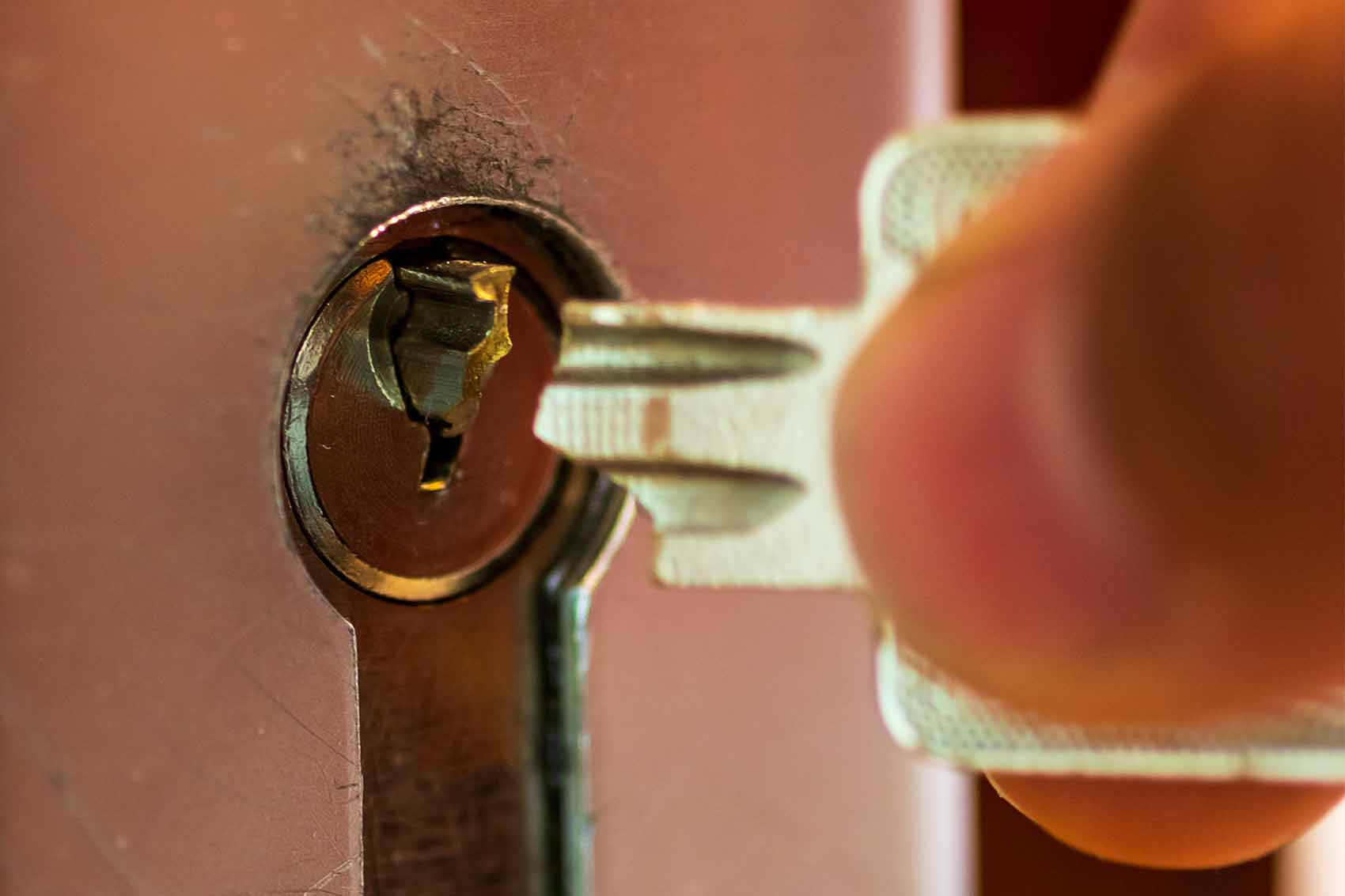How to Remove a Stuck or Broken Key from a Lock
Few things are more frustrating than finding yourself locked out with a broken key stuck in the lock. This situation can happen to anyone—and usually at the worst possible time: late at night, when you’re rushing to work, or while carrying grocery bags. What should you do if your key breaks or gets stuck? Should you try to remove it yourself, use improvised tools, or call a locksmith? This article guides you step by step through the causes, solutions, and precautions to take.
Why might a key break or get stuck?
A key that gets stuck in the lock or ends up breaking doesn’t happen by chance. Here are the main causes:
- Key wear: Over time, keys become thinner, worn, and more fragile.
- Defective lock: A poorly maintained, rusty, or damaged lock can jam the mechanism.
- Wrong key used: Inserting a similar but incorrect key can cause it to get stuck or break.
- Excessive force: Turning a key in a frozen, dry, or seized lock can lead to breakage.
- Temperature and humidity: in winter, moisture can freeze inside the lock and keep the key from turning.
Understanding the cause is important in choosing the right intervention method and preventing the problem from recurring.
Key stuck in the lock: what to do immediately
- Stay calm: Forcing the key will only make the situation worse.
- Lubricate the lock: Use a lock-specific lubricant (graphite or silicone-based). Avoid cooking oil or WD-40, which attract dust.
- Gently wiggle the key: Pull it out slowly, moving it back and forth without sudden movements.
- Check the position: If the key has turned, return it to its original position before attempting to remove it.
In many cases, these steps are enough to free a key stuck in a still-functional lock.
Broken key in lock: methods to remove it
If the key has broken and part of it remains inside, the task becomes more difficult. Here are some possible techniques:
1. Use tweezers or fine forceps
If a piece of key is sticking out, gently grab it with pliers and pull it straight out, without twisting.
2. Use a thin hacksaw blade
Insert a small hacksaw blade (without the handle) into the lock, teeth facing up. The goal is to hook the key’s notches and pull it out.
3. Try with a pin or paperclip
A straightened paper clip or a sturdy pin can sometimes be enough to push or hook the stuck piece.
4. Use a key extraction kit
Locksmiths and hardware stores sell specialized kits for extracting broken keys. These thin, curved tools are designed for this specific task.
When not to insist yourself
It is important to know when to stop trying:
- If the key is inserted deeply and does not protrude.
- If the lock appears damaged or blocked by something else.
- If you risk further damaging the mechanism.
In these cases, forcing can not only make extraction more difficult, but also permanently damage the lock, leading to more expensive repairs.
Prevent broken and stuck keys
A few good habits can significantly reduce the risk:
- Maintain your locks: Apply a dry lubricant (graphite) once or twice a year.
- Replace worn keys: A key that bends or has cracks should be replaced.
- Avoid forcing: If the lock resists, do not force it. Investigate the cause of the jamming.
- Protect locks in winter: Use lock antifreeze or a protective cover.
- Do not use unsuitable keys: Even if they look similar, they can damage the mechanism.
These simple steps can prevent a broken key from getting stuck in the lock and extend the life of your locks.
Should I replace the lock after a broken key?
Not always. If the key was removed without damage and the mechanism still works properly, there is no need to replace the lock. However, if:
- The lock is old,
- The cylinder is damaged,
- Or the key has broken several times,
then it is best to consider a complete replacement. This gives you security and peace of mind.
In this case, you can also take the opportunity to modernize your access by opting for a number lock. This type of lock eliminates the risks associated with broken or lost keys, while offering a practical and secure solution for the whole family.
Calling a locksmith: the safest solution
Even though some techniques work, calling a locksmith remains the safest option. A professional can:
- Quickly extract the key without damaging the lock.
- Check the condition of the mechanism.
- Cut a new key if necessary.
- Advise on lock maintenance or replacement.
Calling a locksmith will save you stress, wasted time and additional costs associated with improvised repairs.
What to do in an emergency?
If you’re locked out of your home because of a key stuck in the lock, it’s important to contact an emergency locksmith service. These services are usually available 24/7 to respond quickly to critical situations, whether it’s a broken key, a jammed lock, or a security issue.
In short…
A broken key or one stuck in a lock is a stressful situation, but rarely irreversible. With a few simple techniques, you can often fix the problem yourself. However, if extraction seems impossible or risky, it’s best to call a professional.
For fast, safe, and efficient service, trust Serrurier Amherst. Their team of specialists is available to help you in Montreal, Laval, and the surrounding areas, whether it’s removing a stuck key, repairing, or changing a door lock.
Don’t let a broken key ruin your day: contact Serrurier Amherst now for a reliable and lasting solution.

